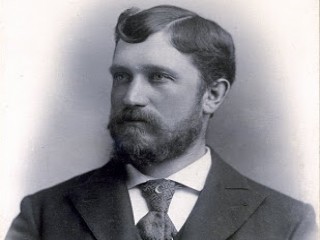
Charles A. Platt biography
Date of birth : 1861-10-16
Date of death : 1933-09-12
Birthplace : New York City, U.S.
Nationality : American
Category : Arhitecture and Engineering
Last modified : 2012-01-20
Credited as : architect, American Renaissance movement, landscape designer
1 votes so far
A trip to Italy in 1892 in the company of his brother to photograph extant Renaissance gardens and villas led to a marked development in Platt's aesthetic approach. Platt published many of these images in his influential book Italian Gardens (Harper & Brothers, 1894), the outcome of two articles published in Harper's New Monthly Magazine in the summer of 1893. The volume was strong on the surviving gardens of the Renaissance and Baroque and made no attempt to describe their history or their designers. (Platt was unaware of the first history of Italian gardens, W.P. Tuckermann's thorough Die Gartenkunst der italienischen Renaissance-Zeit, Berlin 1884.)
As well, the influences of Reginald Blomfield's The Formal Garden in England (1892) and gardens by Gertrude Jekyll illustrated in Country Life further refined Platt's style. The impact of Platt, and of Edith Wharton's Italian Villas and Their Gardens (1904) can be seen in the switch among stylish Americans from country houses set in lawns with shaped beds of annuals, swept drives and clumps of trees typical of 1885 to houses in settings of gravel-lined forecourts, planted terracing, formal stairs and water features, herbaceous borders and pergolas that are typical of the early 20th century.
Platt was a member of the group that gravitated to the Cornish Art Colony which formed around Augustus Saint-Gaudens in Cornish, New Hampshire. His own garden in Cornish, made between 1892 and 1912, exemplifies a new style, essentially an Arts and crafts setting for Beaux-Arts Neo-Georgian and Colonial Revival architecture.
Platt designed a grand country estate for Edith Rockefeller McCormick at "Villa Turicum" in Lake Forest, Illinois (1912, demolished). In 1907 he designed a townhouse for Sara Delano Roosevelt on East 65th Street in New York. Eleanor Roosevelt called Platt "an architect of great taste" who with the townhouse had "made the most of every inch of space."
In 1912 he designed "The Causeway", Washington DC, a Neo-Georgian house in an extensive wooded landscape setting. The MIT Endicott House in Dedham, Massachusetts is a Platt-designed mansion built for H. Wendell Endicott in 1934, in use today as a conference center for Massachusetts Institute of Technology.
Beginning in 1906, Platt also began to receive numerous commissions from the estate of Vincent Astor. Platt turned to professional help in surveying large-scale projects from the sons of Frederick Law Olmsted. He received detailed planting plans to fill his borders from Ellen Biddle Shipman, whom he had come to know through her gardening at Cornish and whom he had instructed in presentation drawings by a draftsman from his own office, then sent to Grosse Pointe, Michigan to plant one of his designs. The Italian Renaissance styled Russell A. Alger House, at 32 Lakeshore Drive, designed by Charles A. Platt now serves as the Grosse Pointe War Memorial. Platt also designed the Lyme Art Association building in Old Lyme, Connecticut.
His more visible public commissions include the Italianate palazzo he designed for the Smithsonian Institution's Freer Gallery of Art (1918) in Washington, D.C. and the campuses of the University of Illinois at Urbana-Champaign (1822 and 1927), Connecticut College, Deerfield Academy, and Phillips Academy Andover, where he designed the chapel and library and their settings. He also designed The Leader-News Building in Cleveland, Ohio at the corner of Superior and Bond Street (now East 6th Street) which reportedly was fitted with elevator cabs designed by Tiffany Studios. The Building was completed in 1912 and per the Architectural Record, "Cleveland is to be congratulated upon the possession of one of the handsomest and most distinguished buildings in the country." - H.D.C
In 1993 Platt's book Italian Gardens was reissued with additional photographs by Platt and an introductory overview by Keith N. Morgan, whose research into Platt's career generated new interest in Platt.
Throughout his life, Platt maintained his house and garden in Cornish, New Hampshire, and an office and residence in Manhattan. With his second wife, Eleanor Hardy Bunker, whom Platt married in 1893, Platt had five children. Among the children were William (1897–1984) and Geoffrey (1905–1985), who followed in their father's footsteps and practiced architecture in New York City. Platt died in Cornish, New Hampshire at the age of 72. In 1919 he became a trustee of the American Academy in Rome and became President in 1928 and served until his death.
His drawings and archives, including the original glass plate negatives for "Italian Gardens" are held by the Department of Drawings & Archives in the Avery Architectural and Fine Arts Library at Columbia University. At the end of the 20th century some of Platt's surviving gardens in their full maturity were opened to the public including the spectacular gardens at the Gwinn Estate in Cleveland, Ohio (designed with Warren Manning and Ellen Biddle Shipman).
















